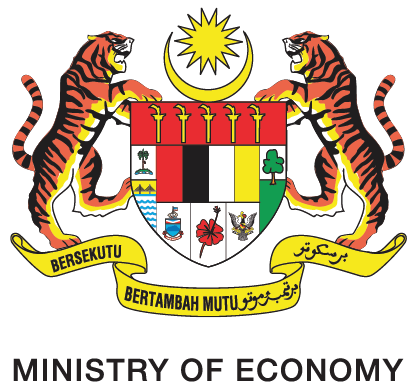Frequently Asked Questions
Carbon Capture, Utilisation and Storage (CCUS) is a set of technologies aimed at reducing carbon dioxide (CO2) emissions from major industrial sources and the atmosphere. CO2 is captured from large point sources such as power generation and industrial facilities. The captured CO2 can then be utilised on-site or compressed and transported via pipelines, ships, rails or trucks to be used in a range of applications or injected into deep geological formations such as depleted oil fields or saline aquifers.
Reference: International Energy Agency (IEA)
The CCUS Bill aims to strike a balance between Malaysia’s economic growth and meeting the nation’s climate change goals. The CCUS Bill consists of several pillars which includes the following: provision to cover the whole value chain of CCUS which comprises of capture, transportation, utilisation, and storage of CO2; a regulatory body to act as a one-stop centre to regulate the deployment of CCUS; appointment of a technical competent entity for offshore and onshore storage of CO2; a licensing and permitting regime; risk and liability management.
Reference: CCUS Bill
The Ministry of Economy is responsible in the implementation of CCUS in Malaysia through the development of the CCUS Bill. In the CCUS Bill, there is a provision to set up a regulatory body to act as a one-stop centre to regulate the whole value chain of CCUS. In addition, a technically competent entity will be appointed for the technical assessment of offshore and onshore storage of CO2.
Reference: CCUS Bill
In the National Energy Transition Roadmap, a target of 3 CCUS hubs with a total storage capacity of 15 Mtpa by 2030 has been set. The CCUS hubs is comprised of two in Peninsular Malaysia, located in Kerteh and Kuantan, and one in Sarawak, situated in Bintulu.
Reference: National Energy Transition Roadmap (NETR)
Carbon Dioxide (CO2) is a naturally occurring gas which is also a by-product of the burning of fossil fuels (such as oil, gas and coal), of land-use changes (LUC) and of industrial processes. Jabatan Alam Sekitar (JAS) has classified CO2 as a greenhouse gas (GHG).
Reference:
The Intergovernmental Panel on Climate Change (IPCC)
Coinciding with the development of the CCUS Bill, the Ministry of Natural Resources and Environmental Sustainability is also drafting the National Climate Change Act (RUUPIN) which aims to regulate GHG emissions and removals in Malaysia including CO2.
References:
- National Energy Transition Roadmap (NETR)
- CCUS Bill
- National Climate Change Act (RUUPIN)
- Energy Efficiency Conservation Act (EECA)
Malaysia’s Nationally Determined Contributions (NDC) target is to reduce the nation’s emission intensity (against GDP) by 45% in 2030 compared to 2005 levels. CCUS can drive the growth of new industries such as blue hydrogen and ammonia while also serving as a technology to abate the production of CO2 from hard-to-abate industries. In reaching net-zero GHG, the adoption of CCUS will assist Malaysia to reduce GHG emissions by 5% in 2050.
Reference: Malaysia Fourth Biennial Update Report Under The United Nations Framework Convention on Climate Change (BUR4)
The National Energy Transition Roadmap has highlighted the role of CCUS in reducing CO2 emissions from hard-to-abate industries. Malaysia is also blessed with high CO2 storage capacity where most of the storage capacity comprises of depleted oil and gas fields. These depleted oil and gas fields provides an advantage for Malaysia to adopt CCUS as it costs less for CO2 storage compared to saline aquifers. It is estimated that Malaysia has a storage capacity of 13.3 gigatonnes of CO2 from major oil and gas fields. Additionally, Malaysia is geographically well-positioned for cross-border storage.
References:
- National Energy Transition Roadmap (NETR)
- Transition Roadmap
- Rystad Energy
- Global CCS Institute
Reference: ‘Carbon capture and utilization as a decarbonization lever’, White Paper, Boston Consulting Group (BCG)

